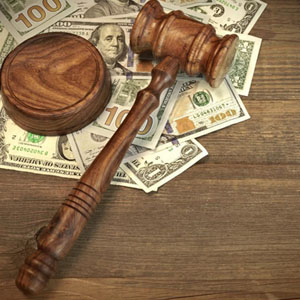 The Different Types Of Bankruptcy Litigation
The Different Types Of Bankruptcy Litigation
Bankruptcy litigation is generally broken down into either (1) disputes involving motion practice under the bankruptcy rules or (2) adversary proceedings. Motion practice is typically for minor disputes and is faster than adversary proceedings. Adversary proceedings are similar to litigation outside of bankruptcy – though generally resolved faster.
Motion practice is handled by filing motions and giving the appropriate notice to the parties involved in the main bankruptcy case. In contrast, adversary proceedings require filing a complaint and a proceeding that is separate but related to the underlying bankruptcy case. When a decision is made under either the motion practice dispute or an adversary proceeding, an appellate action may arise.
The appeals in the bankruptcy court will generally lie directly to the district court in which the bankruptcy court is located. So, for example, in Birmingham, the bankruptcy court for the Northern District of Alabama’s first line of appeals would go to one of the district judges of the United States District Court for the Northern District of Alabama. From there, any appeal would go to the regular appellate court for that district, which for the district courts in Alabama would be the United States Court of Appeals for the 11th Circuit.
Involved Parties In The Different Types Of Bankruptcy Litigation
The parties typically involved in the different types of bankruptcy litigation depend on the type of bankruptcy filed.
Trustees are the primary party in most Chapter 7 bankruptcy litigation. On the contrary, debtors are the primary party in most Chapter 11 and 13 litigation. It is possible for a trustee to be involved in a Chapter 13 litigation case and a Chapter 11 litigation case (if a trustee is appointed), but these instances are rare.
Bankruptcy litigation in a Chapter 7 bankruptcy case will almost always involve that trustee and a creditor because the trustee is appointed to control and liquidate the debtor’s estate. The litigation could involve the trustee seeking to recoup money from a creditor. Or the litigation may involve the debtor defending an adversary proceeding as to a nondischargeability of a debt.
Procedural Issues In The Different Types Of Bankruptcy Litigation
The procedural issues involved in bankruptcy litigation depends on the type of litigation and the issues involved. The person holding the right to the claim being asserted (or defended) is a major factor in determining the proper party. Parties can be the trustee, the estate, the debtor, or another party involved with or related to the debtor, such as a former owner or a current manager or operator.
So, for example, in a large non-dischargeability action, the facts underlying the claim are important, but do they fit within the specific elements laid out in Section 523 and its subsections? The default rule is that any debt is dischargeable unless it falls into a non-dischargeability category. The creditor who would bring the non-dischargeability action will bear the burden of showing that the facts fall within the specific parameters of the statute.
Likewise, for a stay relief motion, the general rule is that any actions would typically be stayed. The creditor seeking relief from the stay will bear the burden of showing that the facts of the situation fall within Section 362’s exceptions to this stay and that the creditor is entitled to relief from the stay.
With preference actions, on the other hand, the burden will fall on whoever is bringing the action to show that a debt or payment was made that should be clawed back to the debtor’s estate based on that preference payment. This will generally be the trustee or debtor.
For automatic stay violations, the burden will initially be on the debtor or trustee to show the violation. However, it will eventually shift to the creditor to overcome the claim by showing that there was no violation or that the creditor had a reasonable basis to think that their actions would either be permitted or not be violated by the stay.
The burden for a breach of fiduciary or fraud claim depends on who asserts the claim. It would most likely be the debtor or the trustee who has to show what is going on and why that falls into the elements of the state law claim for breach of fiduciary duty or fraud.
The Role Of Bankruptcy Trustees In Litigation
Like other things, the role of a trustee in bankruptcy litigation can range dramatically. A trustee may not be involved in some instances or be the party solely responsible for prosecuting or defending the claim in others. The participation and role of the trustee will depend almost exclusively on the type of bankruptcy in question.
Trustees usually ultimately control bankruptcy litigation involved with a Chapter 7 case. This is because the trustee is responsible for the associated estate, liquidating the estate, and paying any creditors.
On the contrary, debtors generally control and manage any litigation or defend any litigation in a Chapter 13 litigation. This is especially true when the bankrupt debtor retains most of the estate after filing their plan. The trustee may have some involvement, but it would likely be relatively limited in scope.
In Chapter 11 litigation where the debtor acts as a debtor-in-possession and trustee, the debtor will almost assuredly handle any litigation. In these instances, this is so whether it be the prosecution or defense of the litigation, unless and until the bankruptcy court appoints a trustee in the case. If a trustee is appointed then the trustee may take over that litigation.
For more information on Different Types Of Bankruptcy Litigation, an initial consultation is your next best step. Get the information and legal answers you are seeking by calling (205) 506-3354 today.

Call Us Now For A Personalized Case Evaluation
(205) 506-3354

